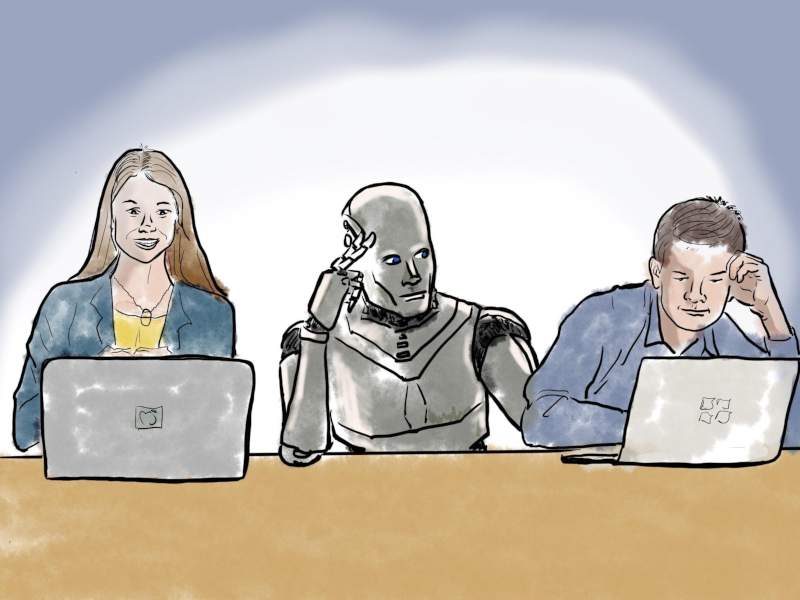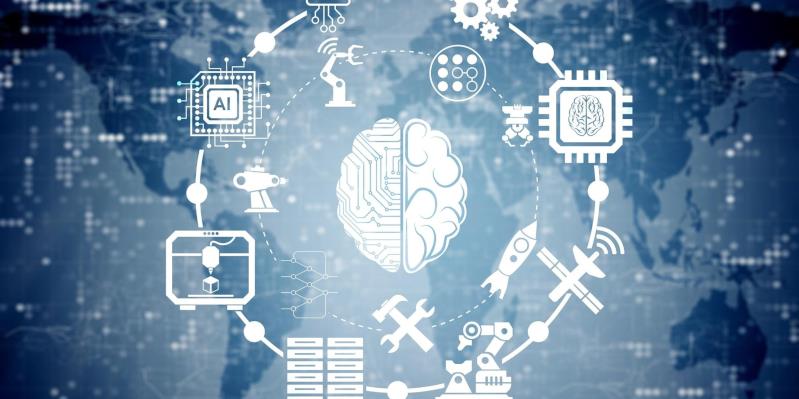Making the Most of Machine Learning: How Will AI Change Organisational Culture and Structure?
Artificial intelligence is here. This cutting edge technology is already used to power powerful systems. One of the most common AI applications is machine learning.
With machine learning and AI, enterprises have the opportunity to resolve all sorts of problems, increase efficiency, productivity, and safe-proof them for the future.
Thanks to AI and machine learning, computers can identify patterns in a copious amount of data and deliver powerful insights. Google, Microsoft, and Amazon are already using it to get a competitive edge.
If you are still unsure whether to use it or not, here is something that might help you decide. Here are the 6 ways AI will change organizational culture and structure.
Learning Will Become An Ongoing Strategy
Corporate training and learning have become one of the most commonly pursued paths for many businesses. AI will have a huge role in building a knowledge-sharing and learning culture.
Once a company implements machine learning and AI, it will be able to analyze the data sets and custom-tailor an in-house process to deliver better results.
All of this will make the adjusting and onboarding a bit more challenging.
This is why companies will have to invest in continuous training. Keeping employees on the top of newly discovered best practices will ensure success.
The question is how will businesses control the KPIs of their training efforts. This is where online exam software will start to play an important role.
Giving the employees the opportunity to take exams on the go and from whatever device they have will streamline the learning/grading process and enable organizations to make better cultural fits.
Automation Will Increase The Quality of Work

Machine learning powered by AI has the capacity to quickly learn how to complete tasks and processes.
It is safe to assume that automation will enter many workplaces, taking over all those repetitive and boring tasks that caused people to make errors.
The results of this practice will be more accurate and the risk of errors will be minimized.
This is not the only thing that will boost the quality of work. Employees will now have more time for other tasks, they will not be in a hurry, thus the quality of the work will go up across the board. Over time, machine learning will be able to help companies achieve better results in even more complicated processes.
In-House Teams Will Become More Agile
In order to achieve true agility, teams have to be informed about objectives, maintain transparent workflow, cooperate with other teams in the company, and base decisions on accurate data.
While the AI cannot bring any improvements regarding the quality of the human-to-human interaction, it can help teams become more agile by delivering them insights.
When clear objectives are established, agile teams have all the creative freedom in the world to refine the processes to achieve the results.
This is exactly where AI can help them. By going through data on past projects AI can identify the best course of action for the current project, thus increasing the agile aspect of all in-house teams.
Data Gathering Will Become An Imperative
Machine learning and AI are unable to deliver results if there is no data to analyze. This is why it is logical to assume that company cultures across the world will start to turn to digitization.
All communication channels, as well as in-house practices, will be shifted to run on digital systems. This will make the data gathering streamlined and increase the overall data collected.
In the first few years, companies will have to digitize all their documents including research papers, reports, projects, and so on. This will be the bread and butter of any AI strategy.
The cloud-technology will become the flavor of the month because it will allow teams to collaborate on this task in an easier and more secure fashion.
Employee Tenure Will Increase
According to an Economic News Release for the Bureau of Labor Statistics, the median number of years that salary workers worked is 4.6.
The companies in the US are not the only ones that struggle with increasing employee tenure. This has become a global problem – one that AI has the capacity to solve.
Machine learning and AI bring new benefits to the table, both for the company culture and structure. AI-powered Automation, for instance, will make the lives of workers significantly easier, allowing them to express creativity rather than being involved in repetitive tasks every working day.
Thanks to ML, L&D departments will be able to develop personalized learning paths for each employee and use online exam software to make professional growth and development more convenient and accessible.
Employee Structure Will Become More Fluid
While many focus on the benefits of the AI and ML, for many organizations it is a technological disruption.
This is why many organizations will have to leave the old models, such as the top-down structure. Organizations will become more team-centric having several multidisciplinary teams on board. This is the only way to survive the bumpy ride of implementing new technology.
Besides, the team-centric approach will enable organizations to minimize the damage, and discover the best course of action in terms of adapting to the changes for the team in the future.
Whether you want to admit it or not AI and ML are coming to the business world. Knowing a thing or two about the changes they bring will help you minimize their disruptive momentum, get your organization ready, and reap the benefits.
Related Posts
As the world of eCommerce continues to evolve, businesses are constantly seeking ways to stand out in the digital landscape. According to a report by Statista, it is predicted that global online sales will reach an impressive mark of $6.5 billion by 2023.
In the era of high-speed internet, owning a server with a 10Gbps connection offers an unparalleled advantage in terms of data transfer speed, website performance, and user experience.
To make your business successful in the modern age, you need to excel at digital marketing and have a strategy that can allow you to beat out the competition.
In the ever-evolving landscape of digital marketing, link building remains a cornerstone of search engine optimization (SEO).
In today's age, establishing an online brand presence is crucial for success. With the vast reach and accessibility of the internet, launching your brand online can open up endless opportunities for growth and expansion.
Ecommerce marketing relies heavily on understanding consumer behavior and psychology to drive engagement, conversions, and loyalty.













Comments
comments powered by Disqus